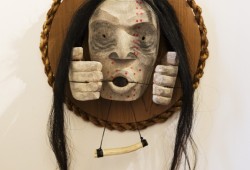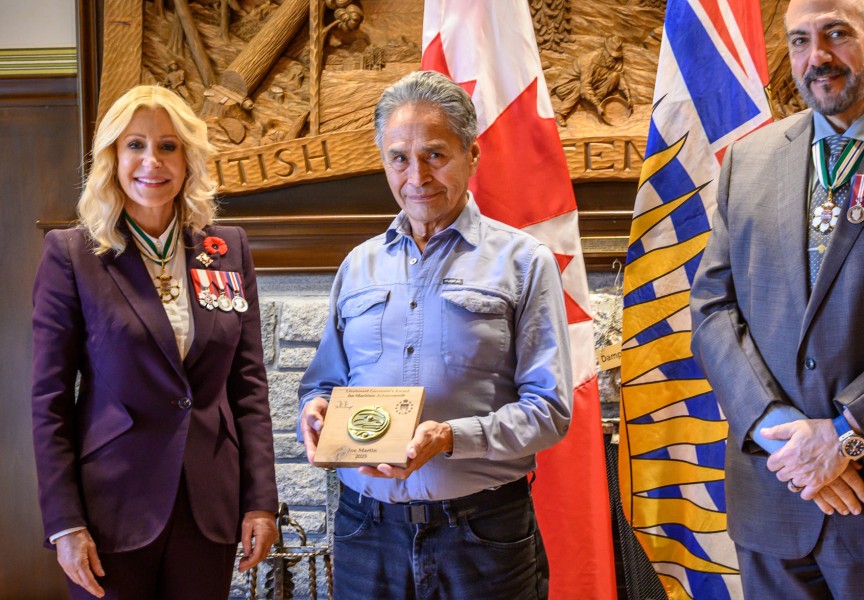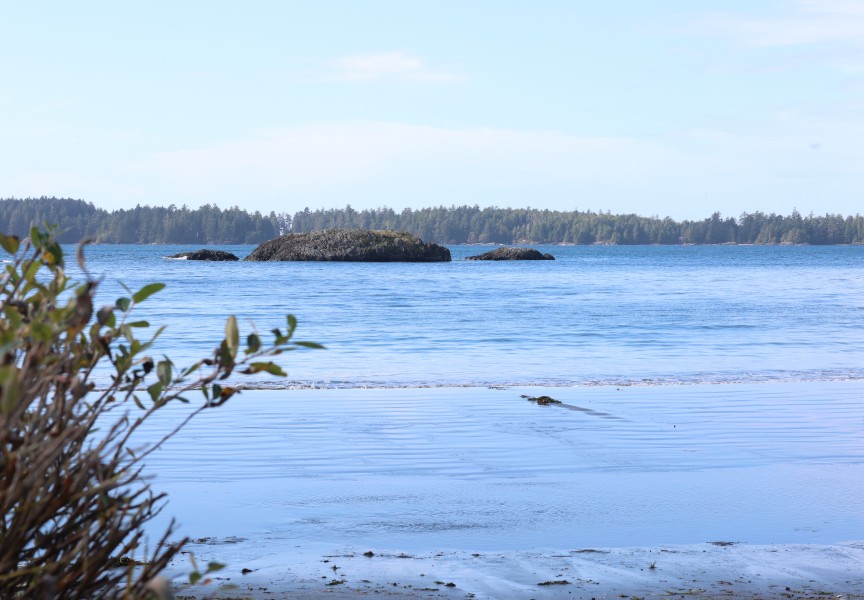To commemorate those who have died from COVID-19, the Government of Canada designated March 11 as a National Day of Observance. The day marked the one-year anniversary of the World Health Organization declaring the virus a global pandemic.
For brothers, Hjalmer Wenstob and Timmy Masso, it also memorialized those who have died in the past year from other issues, like addiction and mental health.
As the world’s eye has been turned on COVID-19, many of those lost lives have been overlooked or forgotten.
“We wanted to remember those people and those families who are mourning in silence,” said Wenstob.
Having spent the past eight months working on a healing song and performance, the Tla-o-qui-aht men used the occasion to reveal their collaboration to the world.
Released as a YouTube video, it contains a performance by Masso, who dances to a healing song while wearing a mask carved by Wenstob.
Written by Masso, the song was built around the phrase “wik̓iitsap tamis,” which translates to “take away the sickness.”
Its lyrics are subtitled in Nuu-chah-nulth and English so that it is accessible “to a greater population far beyond the borders of Nuu-chah-nulth people,” said Wenstob.
“We really wanted it to be a tool that students, young people, language learners or just the average citizen could [access],” he said. “It’s about healing and it’s about coming out of this as strong as we can.”
Collaborating over Zoom, Wenstob and Masso compiled their recordings virtually and dreamed up ways of incorporating a mask and dance into the project.
“Doing my culture is something that is so important to me,” said Masso. “In the recent time of COVID-19, there’s been a lack of it.”
By creating a song that everyone can sing, Masso said he hoped people could use it as a tool on their own journey of healing, while celebrating Nuu-chah-nulth culture.
“A lot of songs are held by chiefs,” he said. “Whenever there’s a chief song, not many people can sing it unless you’re at a potlatch. What Hjalmer and I really like to do is make songs that everyone can sing – so everyone can learn it and use it as much as they want.”
To bring the song to life, Wenstob carved a mask inspired by a traditional Pookmis mask, otherwise known as a drowned whaler spirit.
There’s an old story of a whaler that goes out to sea and drowns, said Wenstob. Pookmis is the whaler spirit that returns as a recluse.
“It felt like the time we’re in,” he said. “That feeling of being so lost with the world around us.”
Characterized with small, beady eyes and grey, wrinkled skin, the mask was designed with a set of hands that covers its mouth. Carved from red cedar, Wenstob and Masso created a mechanism so that the hands can be pulled open to reveal small, red dots around the mask’s mouth.
For centuries, Nuu-chah-nulth peoples have recorded history, like the smallpox epidemic, through masks. It became important for Wenstob to build on that historical archive.
“The hands transform and open to reveal this contemporary history that we’re living in right now,” he said. “It was trying to find a way to capture that story properly in a sculptural medium.”
Recording the video on their traditional territory in Grice Bay, Masso donned a Hudson’s Bay blanket. It served as a symbol to further highlight the impacts of the smallpox epidemic, which was triggered by European settlement and trade with First Nations communities along the Pacific Coast.
Using the past as a link to the present, Wenstob said recording the video was “surreal.”
“We were socially distanced, wearing masks [while] recording this history that we’re living,” he said. “It was a really weird experience.”
Supported by Canada Council for the Arts’ Digital Originals, an initiative to help artists pivot their work for online sharing during COVID-19, the mask was created as a performance piece, rather than for display.
While Wenstob said the mask will make appearances at future potlatches and gatherings, he also hopes to make it available as an educational tool that can be shared in public spaces.
“The consensus from family and those who were involved in the project is that this dance should be danced again when we can be together again,” he said. “Not just in reflection of COVID-19, but in remembering and not forgetting that history – similar to how those smallpox masks are still visible today.”








